Presentation
Increasing shortness of breath and reduced effort tolerance.
Patient Data
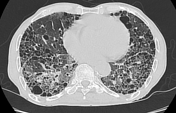

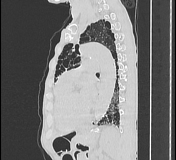

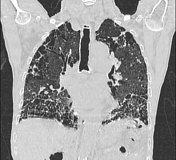

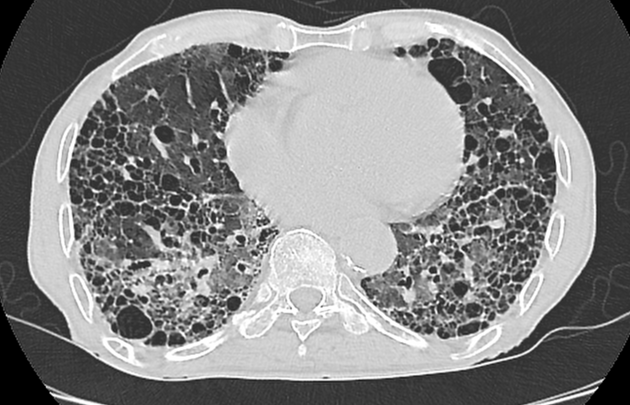
Numerous layers of honeycomb cysts in subpleural distribution, predominantly in bibasal zones. Honeycomb cysts are exuberant, large confluent, and can also be seen in the subpleural location of both upper and mid lung zones. Peribronchiovascular regions of both upper and lower lobes are also involved in the honeycombing. This honeycombing constitutes greater than 70% of the fibrotic portions of the lung- an “exuberant honeycombing” sign”
The “Straight-edge” sign is seen as a sharp demarcation between the honeycombing and the normal lung in both lower lobes.
Traction bronchiectasis with lung architectural distortion. No air trapping or abnormal ground-glass opacities.

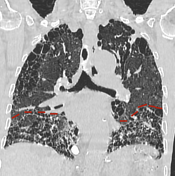
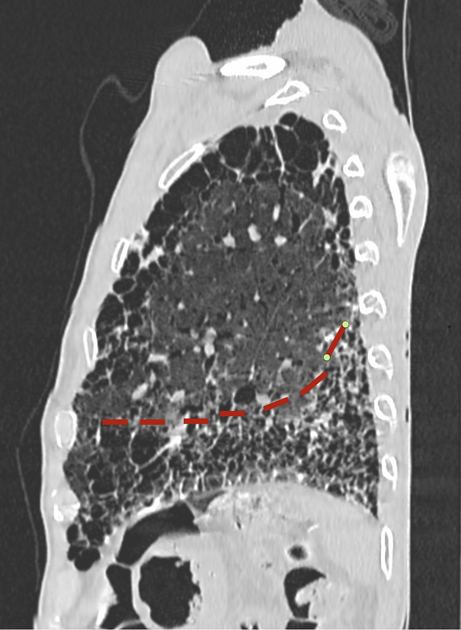
“Straight-edge” sign seen as sharp demarcation between the honeycombing and the normal lung in both lower lobes.
Case Discussion
HRCT features are in keeping with TYPICAL usual interstitial pneumonia (UIP) CT pattern according to the Diagnostic HRCT criteria for UIP pattern- Fleischner society guideline 2018 1.
The presence of exuberant honeycombing and straight edge signs are highly suggestive of UIP secondary to the concomitant connective tissue disorder such as rheumatoid arthritis over the idiopathic pulmonary fibrosis (IPF). Further investigation showed that patient has positive rheumatoid factor and antinuclear antibody (ANA), managed by a respiratory physician and rheumatologist.




 Unable to process the form. Check for errors and try again.
Unable to process the form. Check for errors and try again.